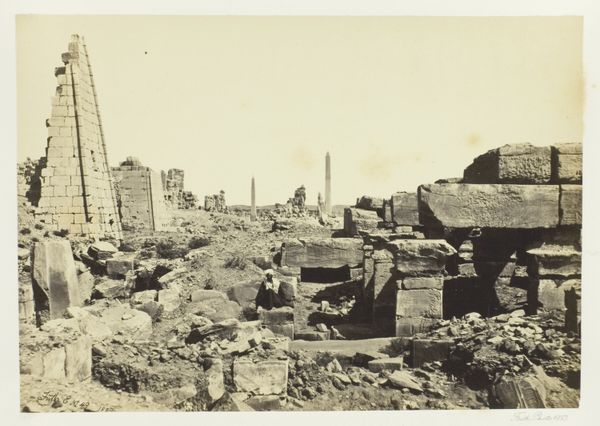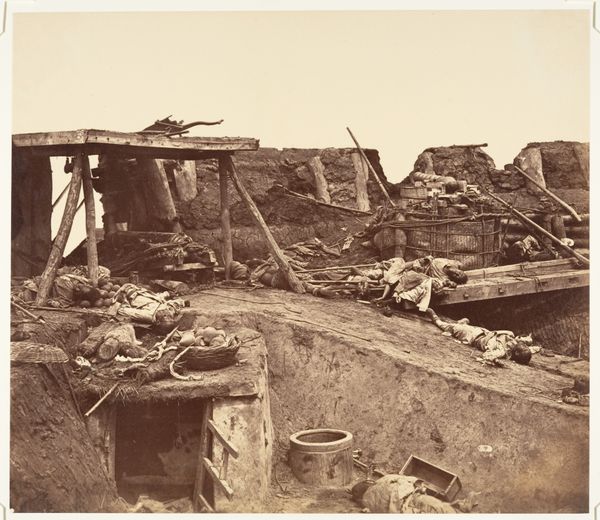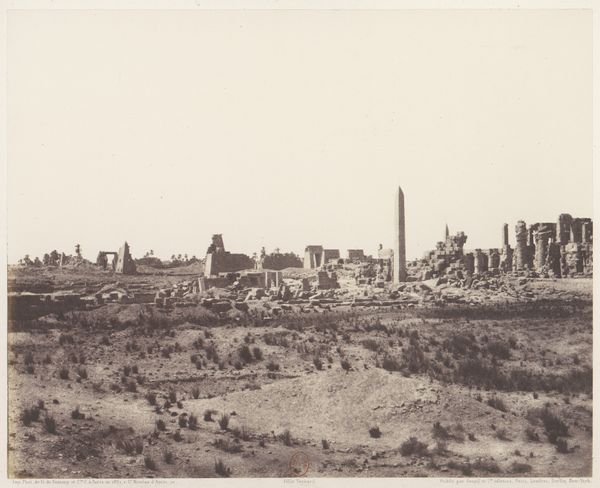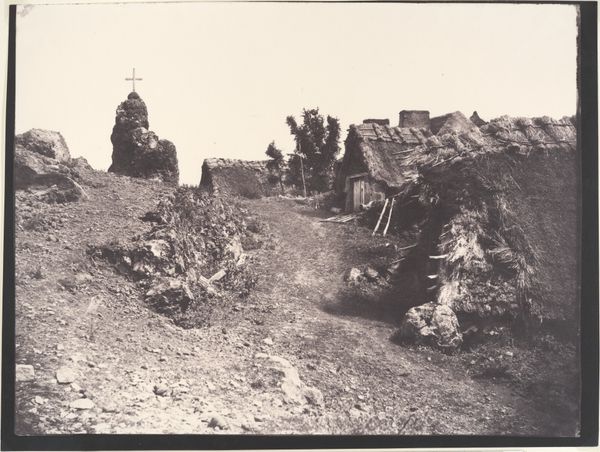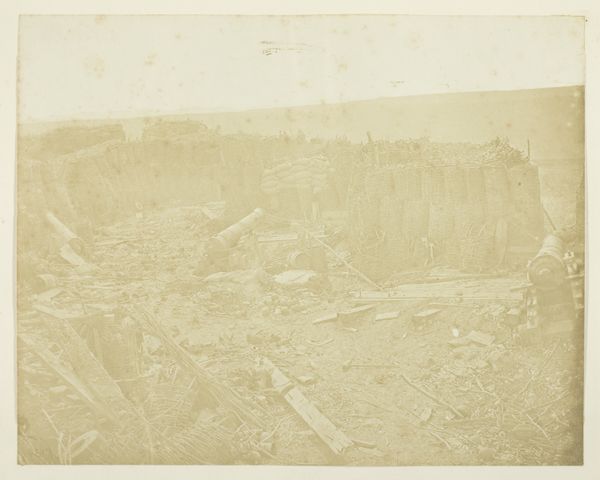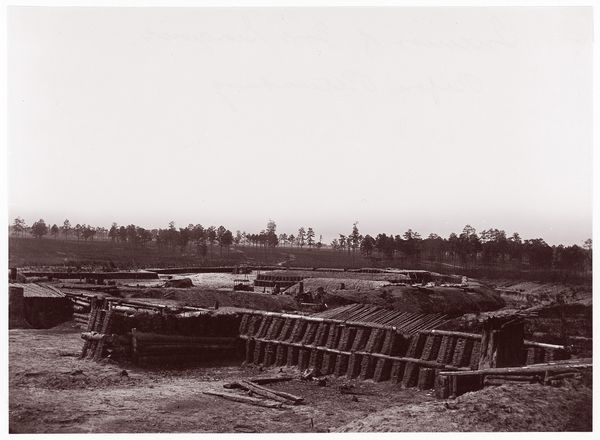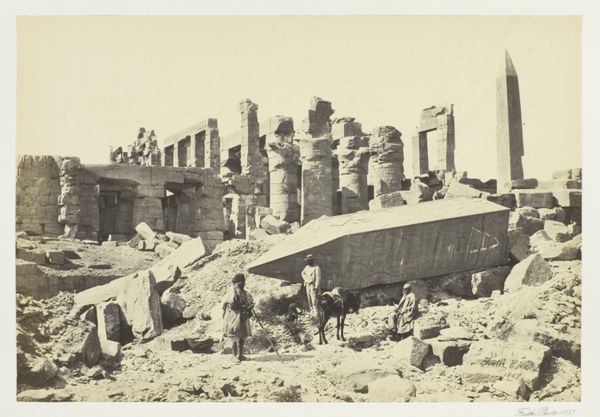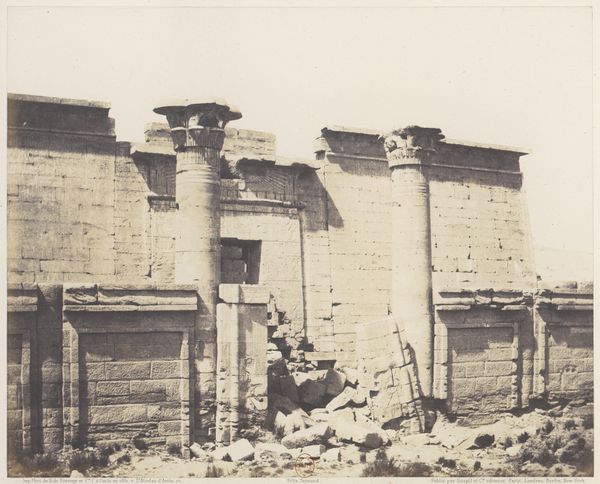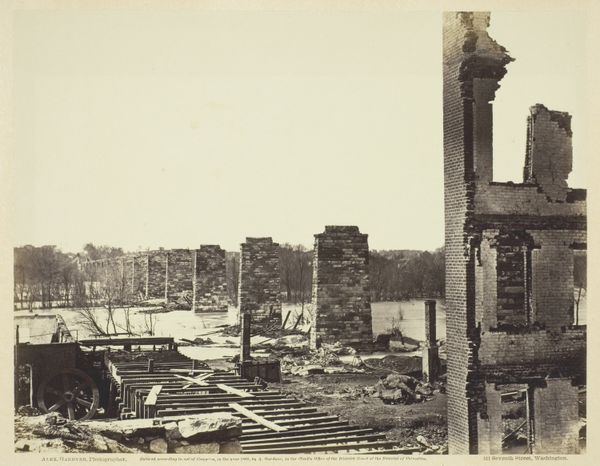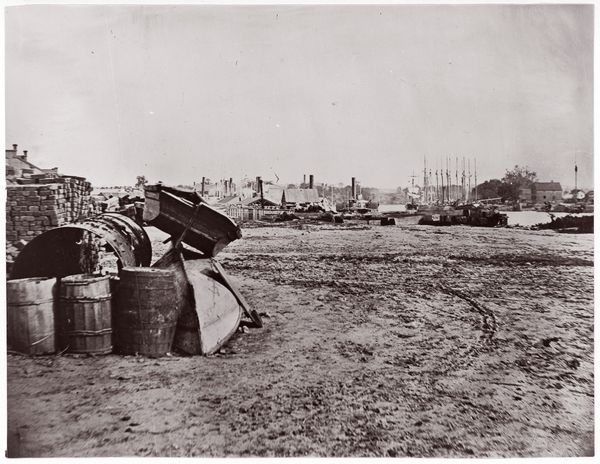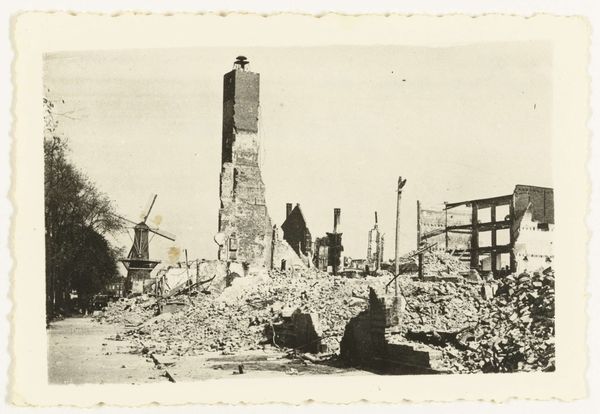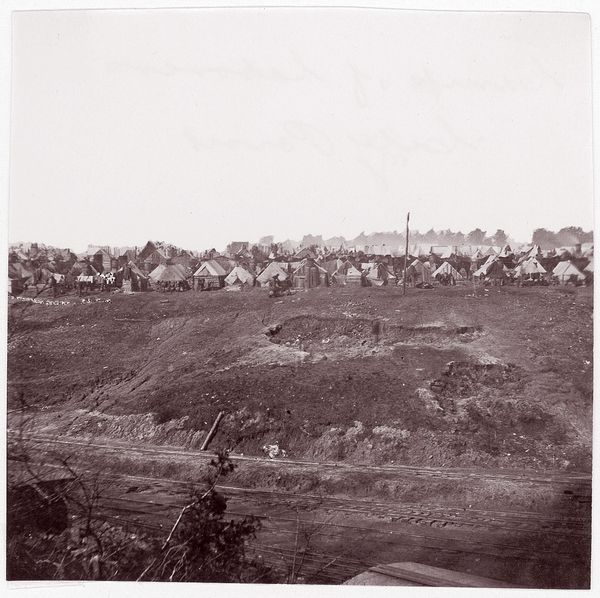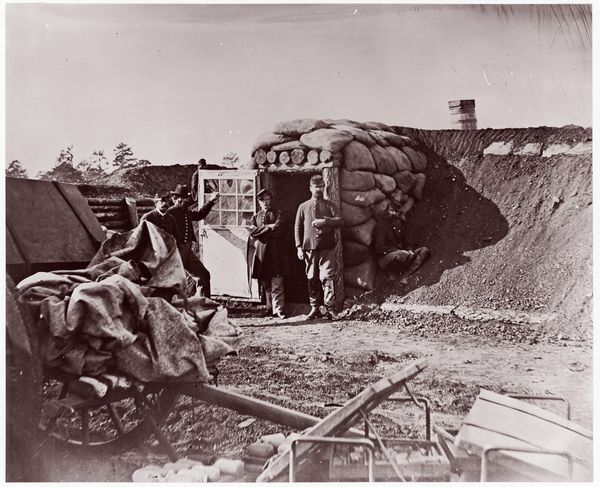
photography, gelatin-silver-print
#
black and white photography
#
war
#
landscape
#
outdoor photography
#
photography
#
gelatin-silver-print
#
monochrome photography
#
history-painting
#
realism
#
monochrome
Copyright: Public Domain
Editor: Here we have Timothy O'Sullivan's "Confederate Fortifications, Petersburg," a gelatin-silver print from 1864. There's a bleakness here, a real sense of desolation, like looking at a landscape that's been utterly ravaged. What stands out to you about this image? Curator: I see a potent visual elegy. The entrenchments and splintered wood evoke not just physical destruction, but also the collapse of ideals, the disintegration of a nation's psyche. Note the careful layering; the way the eye is led into the depths of the image. What might the shattered elements symbolize? Editor: Perhaps the broken planks of wood and piles of dirt represent broken promises and failed ideologies? It feels very raw, exposed. Curator: Precisely! O'Sullivan, a chronicler of conflict, masterfully employs visual symbolism to communicate emotional and cultural trauma. Consider how earthworks, often meant as defensive structures, ironically appear as gaping wounds upon the land itself, and a permanent visual scar. Editor: So, he's using these literal scars on the landscape to mirror the deeper, emotional scars left by the war? Curator: It's an intentional echo. Observe, also, the complete absence of human figures. Does this emptiness amplify or diminish the emotional impact, in your opinion? Editor: I think it amplifies it. The lack of figures makes the destruction feel total and irreversible. There’s a sense of absence that’s even more powerful than if we saw bodies. Curator: Indeed, by presenting absence, O'Sullivan invites us to contemplate what—and who—is missing. It encourages viewers to project their own emotional and psychological responses onto this ravaged landscape. A bleak, but evocative depiction. Editor: I never thought about it that way. The photograph becomes less about recording the event and more about reflecting on its psychological impact, it’s more of an exercise in collective mourning.
Comments
No comments
Be the first to comment and join the conversation on the ultimate creative platform.
